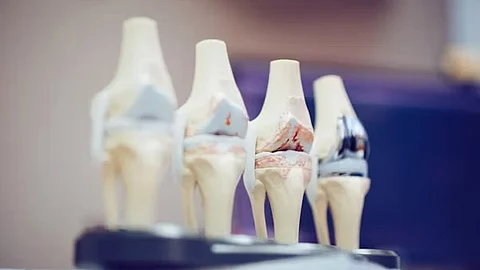

Arthritis is defined as an acute or chronic medical condition that causes swelling, stiffness, and inflammation in one or more Joints.
Arthritis is a major cause of physical disability. It's estimated to affect around 15-20% of the Indian population with an increase in prevalence due to various factors like Age, Gender, Joint injuries, Gene mutations, Comorbidities, and Obesity.
Arthritis Prevalence
More than 50 million adults have arthritis diagnosed by doctors.
That’s 1 in 5 people over age 18.
Almost 300,000 babies and children have arthritis or a rheumatic condition.
That’s 1 in 250 children.
The most common type of arthritis is osteoarthritis, which affects an estimated 31 million Americans.
The projected number of individuals diagnosed with arthritis by doctors in 2040 is expected to exceed 78 million.
MedBound Times reached out to Dr. N Sathi, Consultant Physician and Rheumatologist, UK, for his input on recent changes in the prevalence of arthritis, especially among younger patients.
On World Arthritis Day, we should be mindful of the increasing number of people being diagnosed with and living with arthritis. This is related to several factors including better physician knowledge and diagnostic aids. Arthritis can be divided into Autoimmune conditions, such as Rheumatoid Arthritis, Seronegative Spondyloarthritis, and Osteoarthritis, which is a degenerative condition. Factors contributing to increased risk of Rheumatoid Arthritis include female gender, genetics, younger age (30-50), smoking, stress, and working in manual humid conditions. When it comes to osteoarthritis, obesity (especially in younger adults) and increasing age are among the main risks. While these conditions seem daunting, they are treatable, with patients potentially having a relatively good quality of life.
Dr. N Sathi, Consultant Physician and Rheumatologist, UK
Types of Arthritis
There are 100 different types of Arthritis and related joint diseases affecting people of all Ages, Gender and Races. Some of the commonly occurring are listed below.
Osteoarthritis: Here the cartilage (which covers the ends of bones), gets damaged over time leading to inflammation of the Joints.
Rheumatoid Arthritis: It's an auto-immune disorder affecting joints. This occurs due to inflammation of synovial membranes.
Gout: Arthritis causing the formation of uric acid crystals in joints.
Spondyloarthritis: It mostly occurs in joints near the lower back
Juvenile Arthritis: Arthritis occurring in children below 17 years of age.
Signs and Symptoms
Various types of arthritis impact different joints throughout the body. The symptoms may vary depending on the type of arthritis the person is having. Some of the common signs are:
Stiffness and pain in the joints
Swelling, and tenderness around the joint area
Fever and chills
Inability to move
Changes in joint shape
Difficulty walking or climbing stairs
Joint deformities
Fatigue
Rashes /Patches on joints (mostly fingers)
Changes in fingernails which is noticeable like thickening
Weakness
Prevention
Arthritis can be diagnosed by physical examinations and observing the above-mentioned signs. Not every joint pain causes arthritis. Diagnostic tests like X-rays, CT scans, MRI scans, inflammation markers normal levels (ESR&CRP), and blood tests help in early disease diagnosis.
There's no complete cure for Arthritis. However, its symptoms can be managed. Hence lowering its risk and further prevention if possible.
Some management tips include,
Regular exercise helps improve overall health, strengthens muscles, and improves sleep quality.
Have a balanced diet, and take foods rich in anti-inflammatory properties (Fishes, Nuts, Seeds, Legumes, Green veggies, Garlic, beans, etc.).
Avoid Tobacco products, Alcohol, and Processed beverages.
Wear proper protective equipment for any kind of activity that can damage your joints.
Go for regular health checkups for early diagnosis.
This year's theme focuses on "Informed Choices, Better Outcomes", the awareness about arthritis and musculoskeletal disease which creates impacts on making informed choices regarding disease treatment leading to better outcomes.
References:
Arthritis Foundation Asia. “Arthritis Facts.” Accessed October 10, 2024. https://www.arthritisfoundationasia.com/arthritis-facts.html.
National Center for Biotechnology Information. Osteoarthritis. Bookshelf ID: NBK518992. Last modified April 19, 2018. https://www.ncbi.nlm.nih.gov/books/NBK518992/.
World Health Organization. “Osteoarthritis.” Fact Sheet, October 2022.https://www.who.int/news-room/fact-sheets/detail/osteoarthritis.
By Priyanka S
MSM
